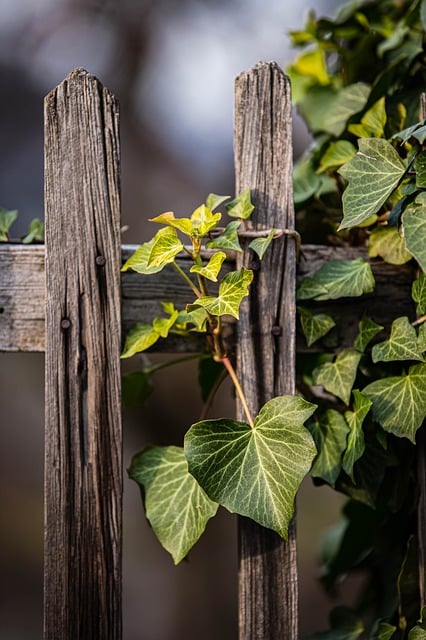In coastal regions, where harsh weather conditions and salt air pose unique challenges, selecting the right fencing material is paramount. This article delves into the benefits of durable wooden fencing as a robust and aesthetically pleasing solution for your coastal property. We’ll explore how the right wood types and thoughtful installation can create a fence that stands the test of time against erosion, moisture, and extreme temperatures. Get ready to discover the key factors ensuring your coastal fence remains a defining feature for years to come.
- Understanding Coastal Fencing Challenges
- Benefits of Durable Wooden Fencing
- Material Selection for Coastal Conditions
- Installation Considerations for Longevity
- Maintenance Tips for Wood Fences in Coastals Areas
Understanding Coastal Fencing Challenges
Coastal areas present unique challenges when it comes to fencing due to their harsh, often unpredictable, environments. Strong winds, salty air, and frequent rainfall can take a toll on traditional fencing materials, leading to premature deterioration and replacement costs. Additionally, coastal regions are at higher risk of severe weather events like storms and hurricanes, which can cause significant damage to structures, including fences.
These challenges necessitate the use of durable materials that can withstand exposure to salt water, moisture, and extreme weather conditions. Wooden fencing, when treated appropriately, offers a viable solution. Look for species like cedar or redwood known for their natural resistance to rot and insect infestation. These types of wood, when combined with protective coatings and treatments, can provide long-lasting coastal fencing that remains robust and aesthetically pleasing over time.
Benefits of Durable Wooden Fencing
Durable wooden fencing offers a range of benefits for coastal areas, where traditional materials might struggle to withstand the harsh elements. Wood has long been a popular choice for fences due to its aesthetic appeal and relative affordability. However, not all woods are created equal—durable varieties like cedar or treated pine are ideal for coastal environments. These species are naturally resistant to rot, mold, and insects, ensuring the fence remains strong and structurally sound even in salty, humid air.
Moreover, wooden fencing provides excellent privacy and security for homes and businesses near the coast. Unlike glass or metal, wood allows for a certain level of visibility while still blocking out unwanted prying eyes. Customizable designs also mean homeowners can create unique, visually appealing barriers that complement their property’s natural surroundings, offering both functionality and aesthetics in one durable package.
Material Selection for Coastal Conditions
When selecting materials for coastal fencing, it’s crucial to consider the unique challenges posed by the environment. Salty air, high humidity, and frequent exposure to moisture can accelerate material degradation. Traditional wooden fences might not hold up well against these conditions, leading to regular maintenance or premature replacement.
For durable coastal fencing, choosing weather-resistant hardwoods is a smart option. Species like cedar, redwood, or treated timber are excellent choices due to their natural resistance to rot and insects. These materials have proven track records in withstanding harsh marine environments, ensuring longer lifespans for fences while reducing the need for frequent repairs or replacements.
Installation Considerations for Longevity
When installing wooden fencing in coastal areas, several key considerations are essential to ensure longevity and durability. First, proper site preparation is critical. This includes ensuring the soil is well-drained to prevent water damage, as high moisture levels can accelerate wood decay. Additionally, choosing the right type of wood and treating it appropriately for outdoor use is vital. Treated or weather-resistant woods like cedar or teak are ideal choices due to their natural resistance to rot and insects.
Another important aspect is installing the fence on a solid foundation. Concrete posts driven deep into the ground provide stability against strong coastal winds and high tides. It’s also crucial to seal all joints and exposed surfaces regularly to protect against moisture intrusion, using high-quality exterior sealants designed for wooden fencing. Lastly, regular maintenance, including cleaning and re-staining, can significantly extend the life of your fence by preventing surface damage and keeping it looking its best.
Maintenance Tips for Wood Fences in Coastals Areas
To maintain your durable wooden fence in coastal areas, regular cleaning and inspection are key. Remove any accumulated salt spray, seaweed, or other debris with a soft brush or pressure washer. This prevents staining and preserves the wood’s natural protection. Inspect the fence for signs of rot, cracks, or pest damage, addressing these issues promptly to prevent further deterioration.
Use appropriate products for wood preservation, such as water-repellent stains or sealers, to protect against moisture and salt air. Avoid using copper-based treatments near bodies of water, as they can harm marine life. Lastly, consider painting the fence with a corrosion-resistant latex paint to offer an extra layer of protection, especially in areas prone to strong winds and storms.
